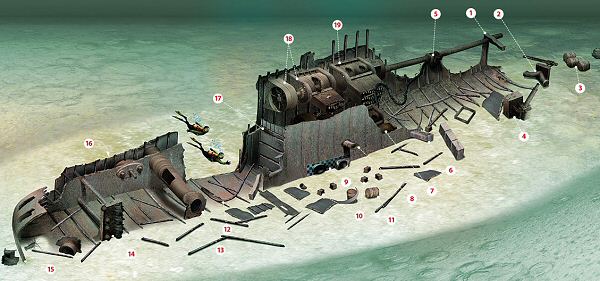It’s not just about the Kyarra wreck out of Swanage – this one may be small and hard to find but it’s beautifully marked, says JOHN LIDDIARD. Illustration by MAX ELLIS
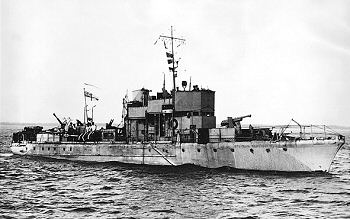
THE CARANTAN WRECK IS ONLY JUST ALONG from the Kyarra (Wreck Tour 47), so close that before the days of GPS and permanent buoys left tied to the wreck, you could end up on the Carantan by mistake.
In fact the wreck was discovered by Diver Guide author John Hinchcliffe, who stumbled onto it.
Considering the number of divers who descend onto the Kyarra on a busy weekend, it is surprising that such a handy wreck receives so little attention.
On the other hand, the Carantan is only a small wreck, so you wouldn’t want more than one boatload of divers on it at any one time.
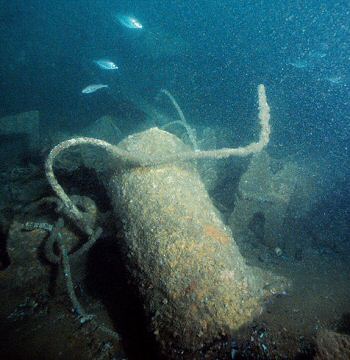
When I dived the Carantan, Martin Jones’ shot had landed just off the wreck in a small but deep scour in the soft rock seabed. I was thinking that I would have to start searching when my eyes adjusted, but I looked up and saw the A-frame supporting the starboard propeller-shaft (1) above me.
With a bare shaft and broken stern, it is worth having a quick look off the end to see what can be found. In average visibility, and within sight of the main body of the wreck, only 2 or 3m out at a depth of 29m
is a big Y-gun, a device for launching depth charges to either side, attached to a small square base (2).
Behind this, and flat on the seabed, is a simple tiller steering mechanism, then, a similar distance further out, a row of depth charges (3).
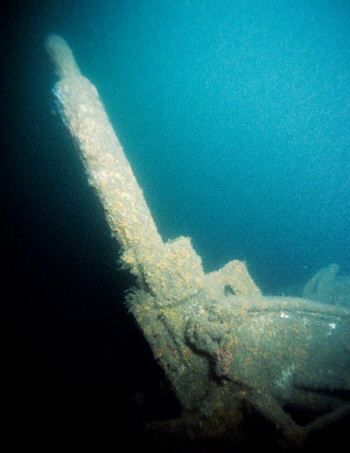
Back on the wreck, the Carantan lies on its port side, which puts the deck on the left when viewed from the stern. On the deck side, and pointing towards the surface, is a single two-pounder anti-aircraft gun (4).
On the keel side of the wreck, the hull is beginning to build up, with the gland (5) from the starboard propeller-shaft between the double skins of the hull.
A thick electrical cable is draped back across the wreck, evidence of the Carantan‘s mine-sweeping equipment.
Back on the deck side of the ship, and staying there for a while, a thin-walled box section with layers of fine fins would have been a cooling radiator (6) for electrical equipment, perhaps from the ASDIC or radio. Next to this is a lead-acid battery.
A little further forward, the broken edge of the main deck rises a little from the seabed, and tucked in behind the deck is a compressed gas cylinder (7).

A little higher and further forward is the base of the steering binnacle (8). The wheelhouse itself was constructed of brass plate, perhaps contributing to the Carantan’s fatally poor stability in a heavy sea. This is also an obvious target for salvage, so it’s unsurprising that none of the wheelhouse remains.
This marks the centre-line of the ship, and shows how far into the seabed the wreckage has sunk, and why there is no sign of the port propeller-shaft.
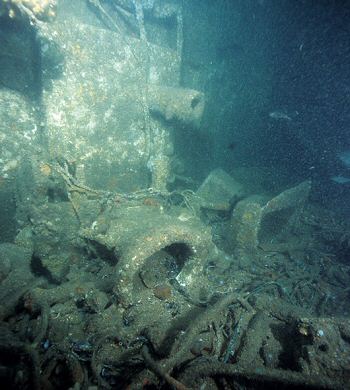
Almost on the seabed are the bathroom fittings (9) – a small basin and a toilet with a floor of small blue and white tiles, a change from the big black and white tiles common on British ships.
Out on the seabed among debris from the upper deck of the ship are several more electrical batteries (10), then more depth charges (11) and shell-casings.
The deck now breaks completely at the remains of a bulkhead. Part of a hatch coaming remains forward of the bulkhead, then an angular section that could be from the front of the wheelhouse (12).
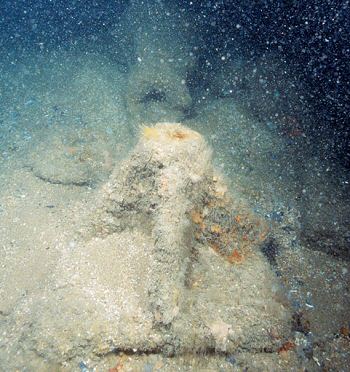
Our tour passed a shell casing earlier. The corresponding 75mm gun of WW1 vintage has been salvaged, though the support for the gun-mount remains (13), a heavy steel tube that drops through a scrap of deck to the keel. A hatch in the shaft may have been used for lifting ammunition.
A little further forward, the anchor-winch (14) is similarly supported firmly from the keel by a pair of steel tubes.
Finally, the bow is broken almost to the keel, only the stem post remaining (15).
On the seabed just off the tip of the stem post is a small section of hull, with the anchor locker recessed into it.
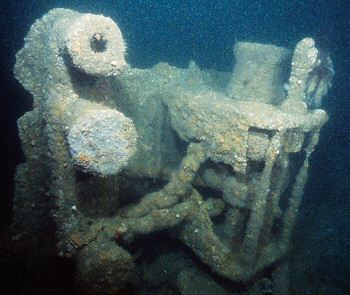
Unusually for a Wreck Tour, our route back aft now follows the keel side of the wreck to a big half-teardrop-shaped protrusion from the bottom of the keel, the sonar housing (16).
The other half of the teardrop has been removed, together with the contents of the housing, I suspect by Navy divers soon after the Carantan sank in December 1943. The top part of the mechanism for rotating the sonar and two big electrical terminals can be found just inside the keel.
Back amidships, the bulkhead beneath the wheelhouse has a ladder (17) fixed to it almost all the way down to the keel. Rising up to the starboard side of the wreck at about 23m, just inside this bulkhead is a diesel generator (18), then a diesel engine (19) driving the starboard propeller-shaft.

The generator is massively over-sized for a ship of the Carantan’s 135 tons, and would have powered the electrical mine-sweeping equipment. The corresponding machinery on the port side is buried in the sediment and debris below.
If ascending on a delayed SMB, this is the shallowest point of the wreck, and a good place to launch it from, though beware that it could be close to the shotline, depending on the direction in which the tide builds.
With this in mind, it may be easier to swim 10m or so off to one side of the wreck to launch a delayed SMB, or on a wreck this small with little deco, to return to the shotline and ascend.
Thanks to Martin Jones.
TOUR GUIDE
GETTING THERE: Follow the A351 past Corfe Castle to Swanage and follow the signs for the town centre and pier. Parking on the pier is limited, so be prepared to drop divers and kit and use the car park further up the hill.

HOW TO FIND IT: The GPS co-ordinates are 50 34.991N, 001 56.224W (degrees, minutes and decimals). The wreck lies with its bow to the west and, being so small, is difficult to find and shot.
TIDES: Slack water occurs one hour before and six hours after high water Dover, at the same time as slack on the nearby Kyarra. Visibility is usually best at high-water slack.
DIVING: Sidewinder and Mary-Jo from Swanage Boat Charters, 01929 427064.
AIR: Air and nitrox are available on Swanage pier from Divers Down, 01929 423565
ACCOMMODATION: There are many B&Bs, small hotels and camp sites. Contact Swanage Tourist Information, 01929 422885.
QUALIFICATIONS: An easy depth for PADI Advanced Open Water or BSAC Sports
Divers, and especially suited to nitrox.
LAUNCHING: There is a slipway at the Swanage boat park, which is close to the lifeboat station.
FURTHER INFORMATION: Admiralty Chart 2615, Bill of Portland to the Needles. Ordnance Survey Map 195, Bournemouth, Purbeck and Surrounding Area. Dive Dorset, by John & Vicki Hinchcliffe. South Coast Shipwrecks of East Dorset & Wight, by Dave Wendes.
PROS: Convenient from Swanage, and worth a diversion from the Kyarra.
CONS: Could be crowded if more than one boatload of divers is on the wreck.
DEPTH: 20m-35m
